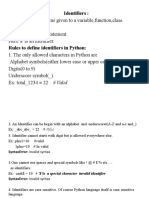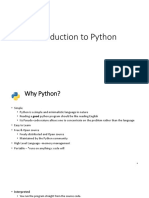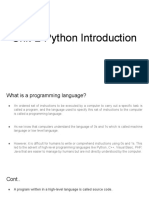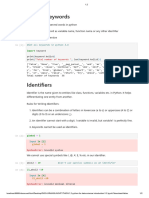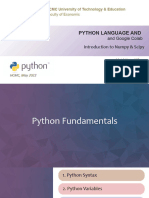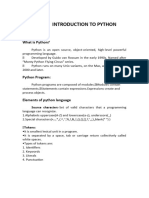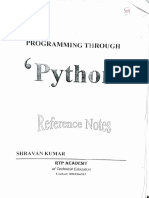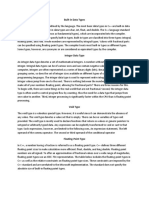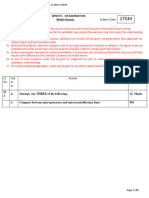0% found this document useful (0 votes)
21 views10 pagesIdentifiers Data Types
The document outlines the rules for creating identifiers, the nature of variables, and the significance of keywords in Python. It explains that identifiers must follow specific naming conventions, variables store data values and can be mutable or immutable, and keywords are reserved words that cannot be used as identifiers. Additionally, it covers basic data types in Python, including numbers, strings, booleans, and the process of type conversion.
Uploaded by
Remya GopinadhCopyright
© © All Rights Reserved
We take content rights seriously. If you suspect this is your content, claim it here.
Available Formats
Download as DOCX, PDF, TXT or read online on Scribd
0% found this document useful (0 votes)
21 views10 pagesIdentifiers Data Types
The document outlines the rules for creating identifiers, the nature of variables, and the significance of keywords in Python. It explains that identifiers must follow specific naming conventions, variables store data values and can be mutable or immutable, and keywords are reserved words that cannot be used as identifiers. Additionally, it covers basic data types in Python, including numbers, strings, booleans, and the process of type conversion.
Uploaded by
Remya GopinadhCopyright
© © All Rights Reserved
We take content rights seriously. If you suspect this is your content, claim it here.
Available Formats
Download as DOCX, PDF, TXT or read online on Scribd
/ 10

